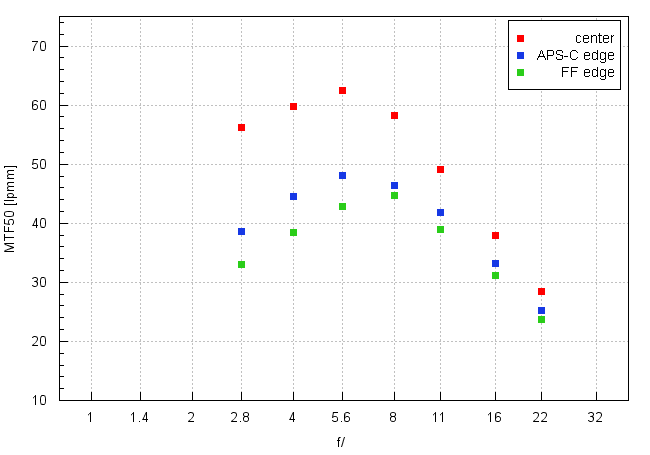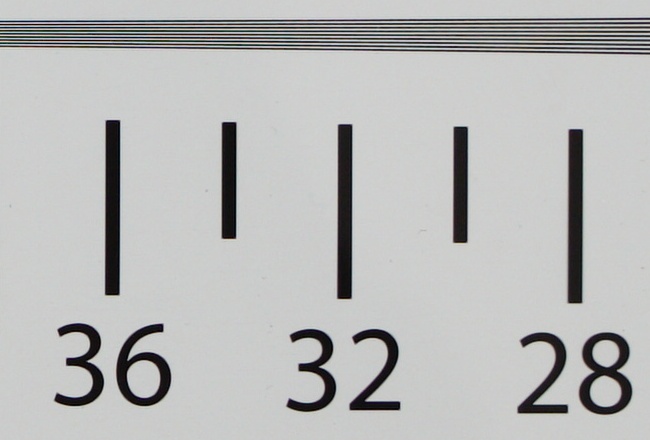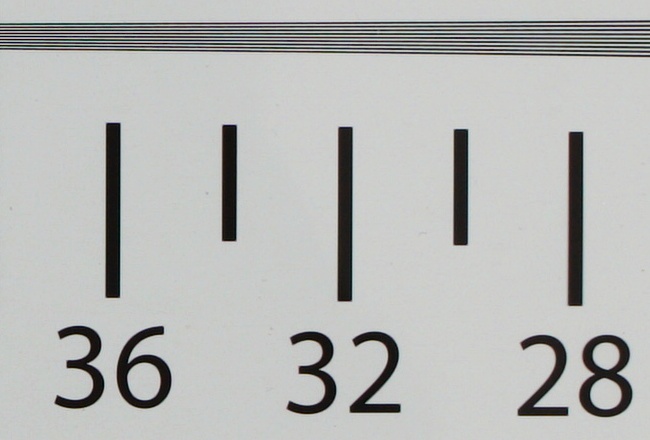Tamron 20 mm f/2.8 Di III OSD M 1:2
4. Image resolution
Let's check how the tested Tamron 20 mm f/2.8 Di III OSD M 1:2 compares – its results in the frame centre and on edges of APS-C and full frame sensors are presented below.

Please Support UsIf you enjoy our reviews and articles, and you want us to continue our work please, support our website by donating through PayPal. The funds are going to be used for paying our editorial team, renting servers, and equipping our testing studio; only that way we will be able to continue providing you interesting content for free. |
- - - - - - - - - - - - - - - - - - - - - - - - - - - - - - - - - - - - - - - - - - - - - - - -
The performance in the frame centre is very good. The lens doesn't have the slightest problems to produce sharp images even at the maximum relative aperture. The peak of the Tamron's performance is reached near f/5.6 where the lens exceeds 60 lpmm. It's far from record-breaking values but it would be foolish to expect it from an f/2.8 device.
Unfortunately, as we progress to the performance on the edge of the frame we have to stop our praises because here you can have a lot of reservations. First of all, near the maximum relative aperture it would be difficult to talk about full usefulness of images – the problem concerns both the edge of the APS-C sensor and edges of full frame. Fortunately, in the case of the smaller detector, images become quite decent already on slight stopping down of the aperture (near f/3.2). When it comes to full frame stopping down has to continue to near f/4.5.
We are also worried about huge difference between resolution on the edge of the frame and the frame centre. In the case of the edge of APS-C that difference reaches more than a dozen lpmm and on full frame it approaches even 20 lpmm. As a kind of consolation we might say that from f/5.6 to f/8.0 you are able to get sharp images across the frame and enjoy good quality photos with a significant angle of view, that of over 94 degrees.
At the end of this chapter, traditionally, we present crops taken from photos of our resolution testing chart which were saved as JPEG files along with RAW files we used for the analysis above.
| A7R II, JPEG, 20 mm, f/2.8 |
 |
| A7R II, JPEG, 20 mm, f/5.6 |
 |






